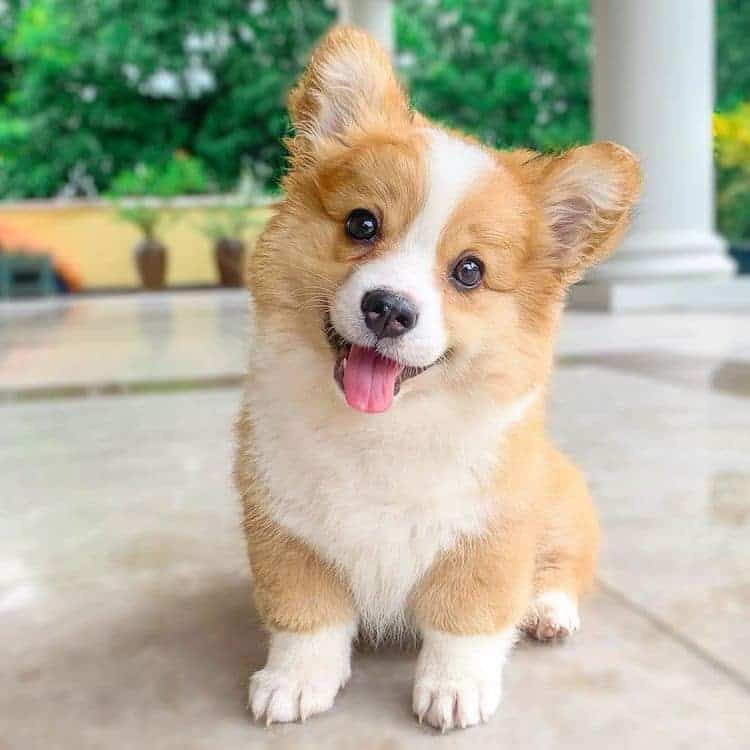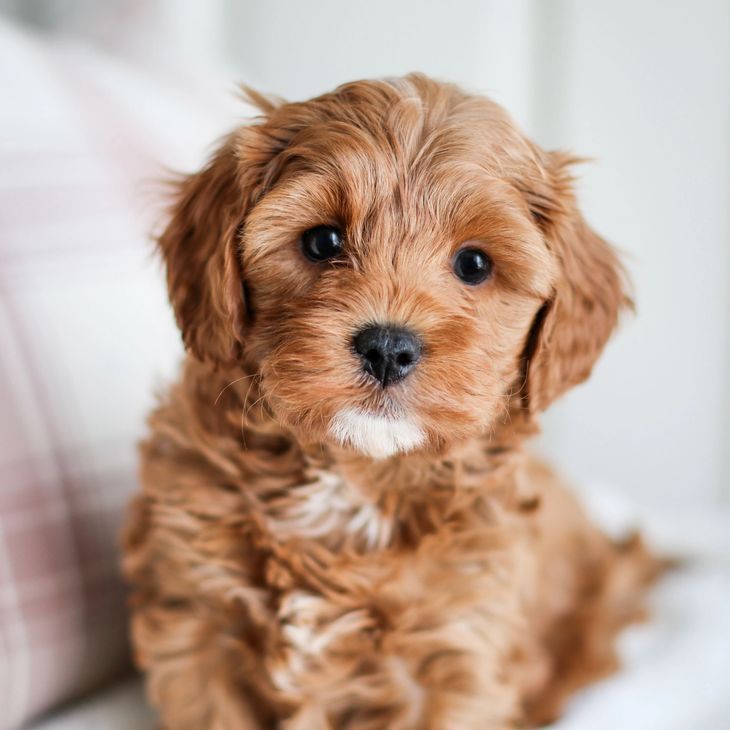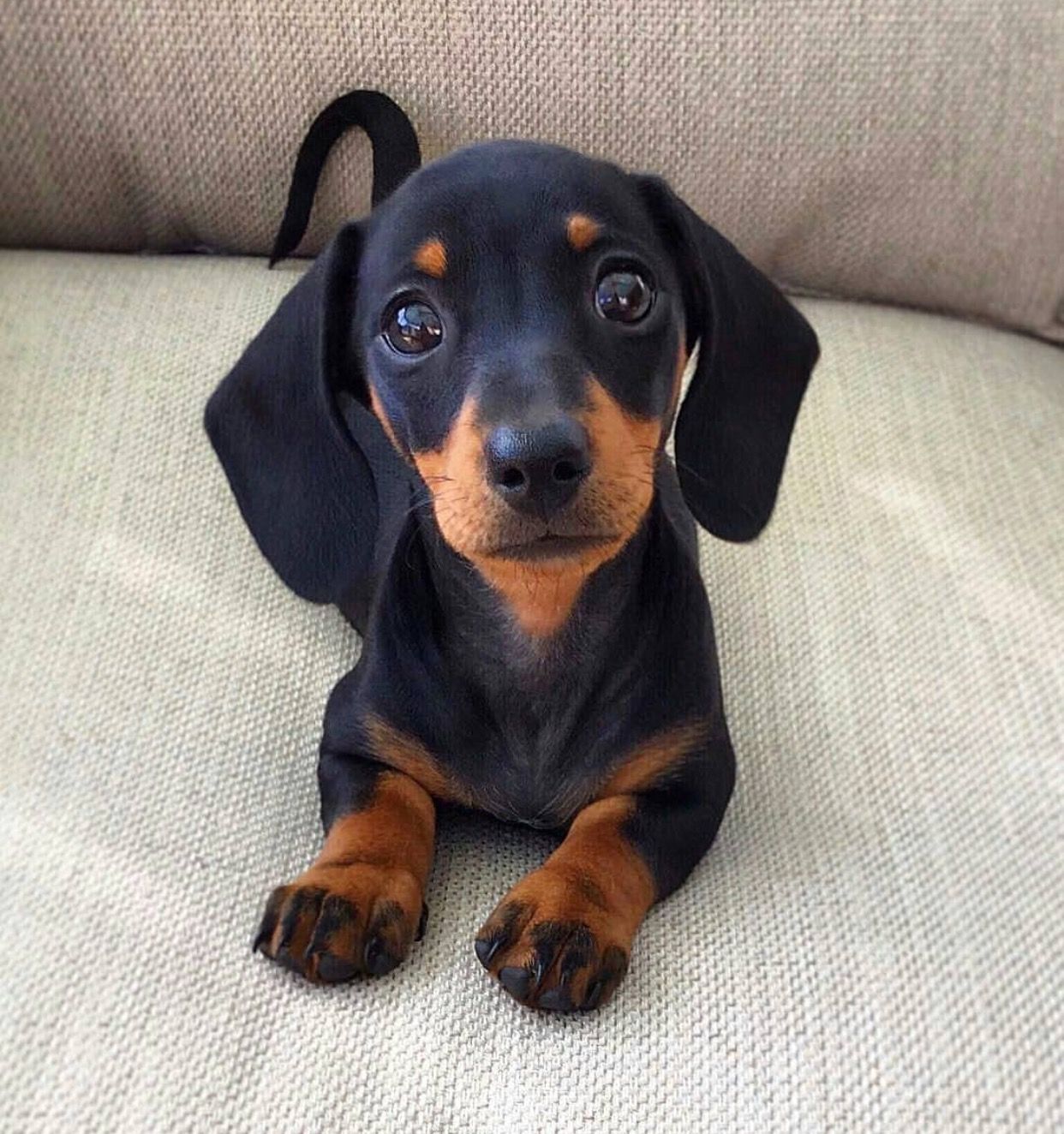When And How To Bathe A Puppy
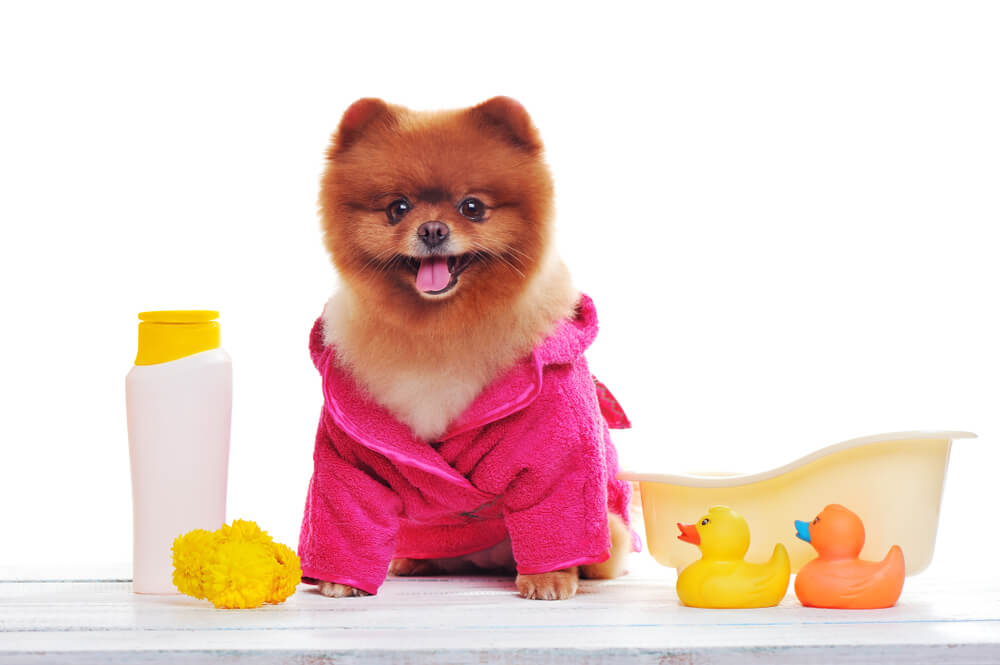
Table of Contents
Listen To The Article
Introduction to When And How To Bathe A Puppy
You’ve taken your new puppy home.
Now what?
Your puppy is adorable but smells kind of funny.
Should you bathe him right away?
How often and with what?
You may find yourself wondering, when and how do you bathe a puppy?
Puppies may look like little adults, but they are not. In fact, puppies need lots of care, just like human babies do.
One of the things that puppies need is regular baths.
How often you bathe your puppy depends on her age, her lifestyle, and whether she’s healthy.
But no matter what, puppies need to be bathed!
If you bathe your puppy too infrequently, she could get sick from the buildup of dirt and oils in her fur.
If you bathe her too frequently, she could get sick from the stress of being bathed.
Bathing your puppy is an important part of caring for the young animal, but knowing when to bathe your puppy in the first place, and what you should use to wash them can be a bit tricky.
You may wonder if it’s ok to bathe a puppy right after they’ve been born, and the answer is yes.
Most puppies are born with a protective covering of lanugo, which is a fine, downy hair.
This lanugo protects puppies from cold temperatures and helps keep them warm.
However, sometimes this lanugo can get a bit dirty, and it’s important to wash this off, as it will not come off on its own.
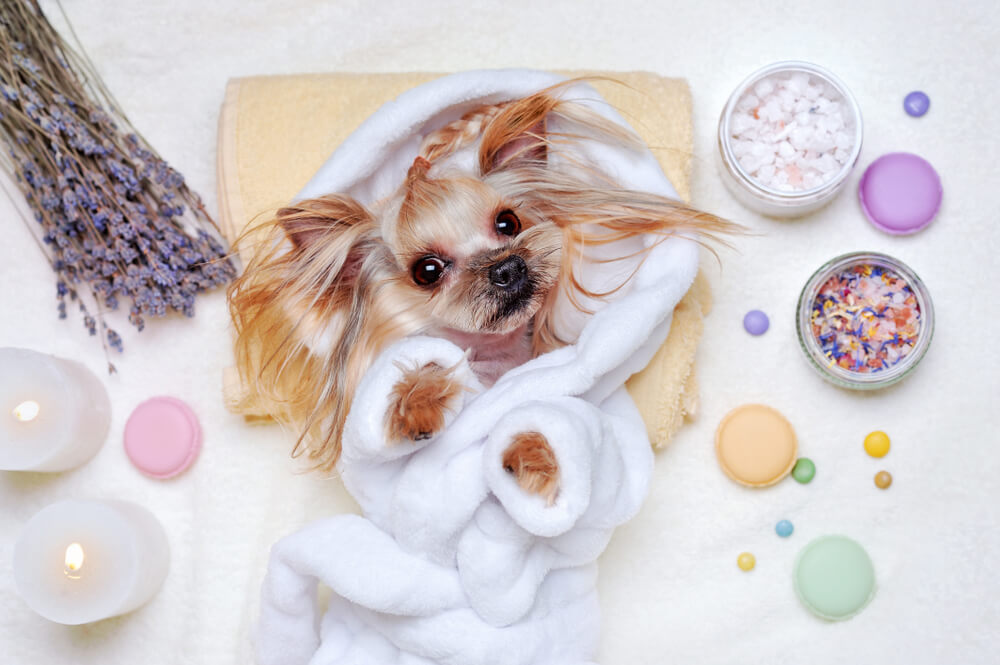
What Age Do You Bathe Your Puppy?
Puppies at any age like to get dirty but it is not smart to bathe your puppy when it is too young.
You should only bathe puppies that are older than 12 weeks until they are old enough you might have to settle cleaning your puppy with a sponge bath.
Before your dog is 12 weeks old the less water the better.
Just spot clean your puppy with a damp cloth. Use a mild dog shampoo on the puppy’s sensitive skin and hair.
Dry your puppy off right away.
Puppies shouldn’t be bathed until they are at least four weeks old six or eight weeks is better.
The little guys have trouble regulating their body temperature at that age and can become chilled.
Puppies who get sick with diarrhea may need dunking, but the stress of a bath can make the illness worse.
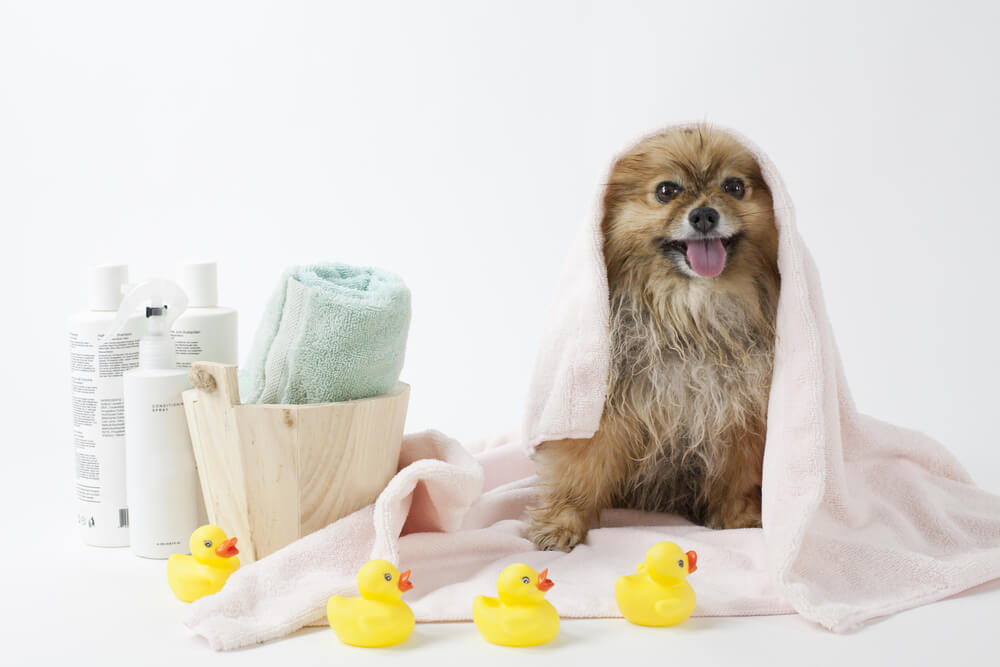
Things needed for your puppy’s first bath
Giving a puppy its first bath is one of the sweetest moments any animal lover can experience.
However, there are some factors that should be taken into account before bathing puppies.
These factors are directly related to a puppy’s health.
Extra care needs to be taken especially if your puppy is between 1 and 2 months old.
If your puppy is dirty, has fleas or you want to introduce them to clean water as part of their socialization process, it is important to follow a specific set of rules or advice.
Here are the must-haves of puppy bathing time.
- Table
- Towel
- Suitable puppy brush
- Hair Dryer
- Dog bath or other suitable containers
- Puppy shampoo – don’t use Human Shampoo
- A Treat
Choose a nice, mild shampoo made for dogs.
Do not get one that only smells nice.
It should smell nice and have something else to offer like moisturizing effects, or promoting coat shine.
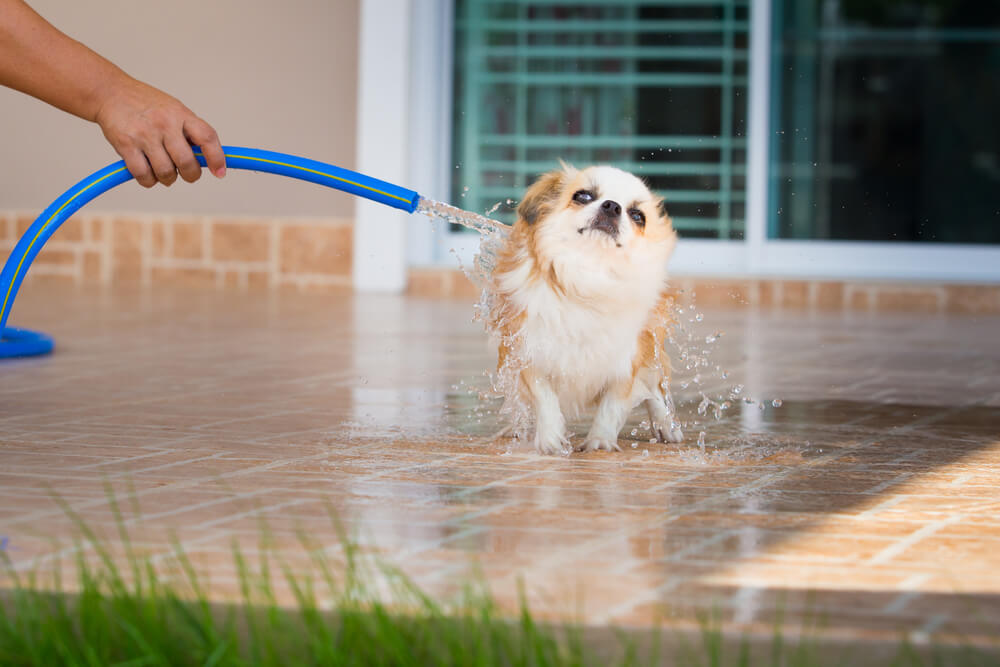
How Often Should I Bathe My Dog?
While dogs don’t require daily scrub downs as we do, they do need regular baths but just how regular depends on several factors, such as the dog’s environment and type of coat.
Your veterinarian can give you advice on how much bathing is appropriate for your individual dog.
- Bathing once a month works for most dogs.
- Dogs with oily coats, like Basset Hounds, may need bathing as frequently as once a week.
- Many short-haired breeds with smooth coats, such as Beagles and Weimaraners, do just fine with less frequent baths.
- Short-coated Basenjis are fastidious in their personal hygiene and rarely need a bath.
- Breeds with water-repellent coats, such as Golden Retrievers and Great Pyrenees, should be bathed less often so as to preserve their natural oils.
- Dogs with thick, double coats, such as Samoyeds, Malamutes, and other Northern breeds, do best with fewer baths and a lot of extra brushing, which gets rid of loose, dead hair and helps distribute natural oils that keep your dog’s skin and coat healthy.
- Of course, if your dog likes to go swimming, is obsessed with mud puddles, or lives in the country and does a lot of rolling in who-knows-what, then you may want to bathe more frequently than if that same dog lived in a condo in the ‘burbs.
That said, avoid bathing more often than truly necessary, or you’ll strip your dog’s coat of its natural oils, making it dry and more prone to dandruff, frizzy, and mats.
Some shampoos may dry or irritate the dog’s skin more than others, in which case you should bathe less often or try a different shampoo.
Basically, the best way to gauge when your dog needs a bath is to give them a good sniff.
How do they smell to you?
Not so good?
Start running the water.
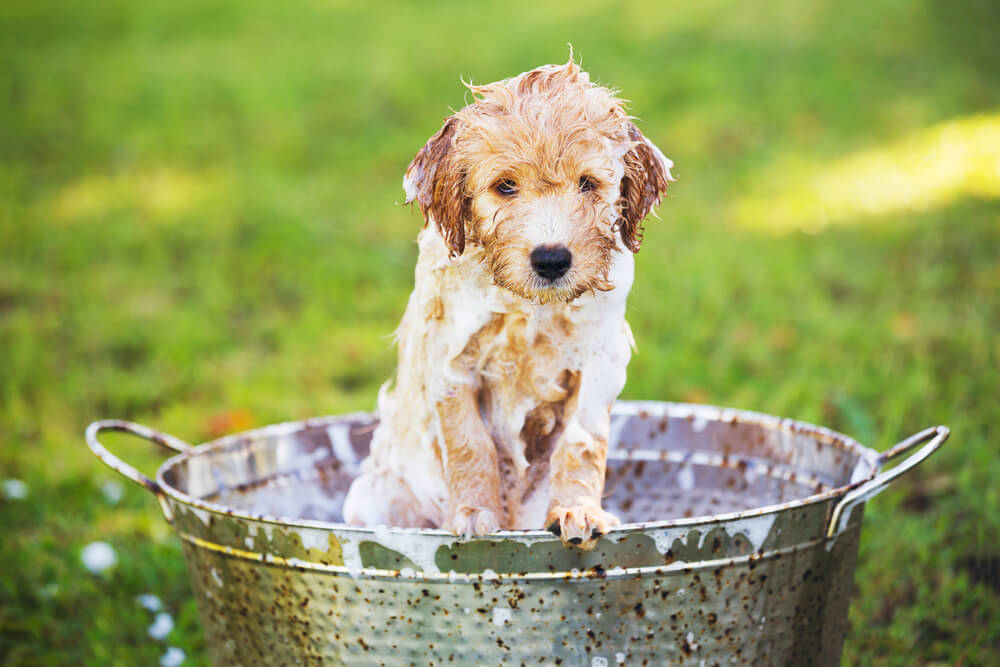
Where Should I Wash My Dog?
Parents of small dogs have an advantage; they can just plop the dog in a sink or laundry tub.
But if you can’t fit your dog in a sink, then you’ll probably have to use the bathtub or get in the shower with them and use a detachable nozzle.
A portable doggy tub is also an option.
While some tubs are made of heavy plastic, others are collapsible and can easily be used outside or in the laundry room or mudroom.
Some grooming or pet supply stores rent out dog tubs and towels.
Using a garden hose is okay if the dog is truly filthy and the weather’s good, but make it an occasional experience.
Dogs don’t like being cold any more than we do, and many don’t like having a hose shot at them.
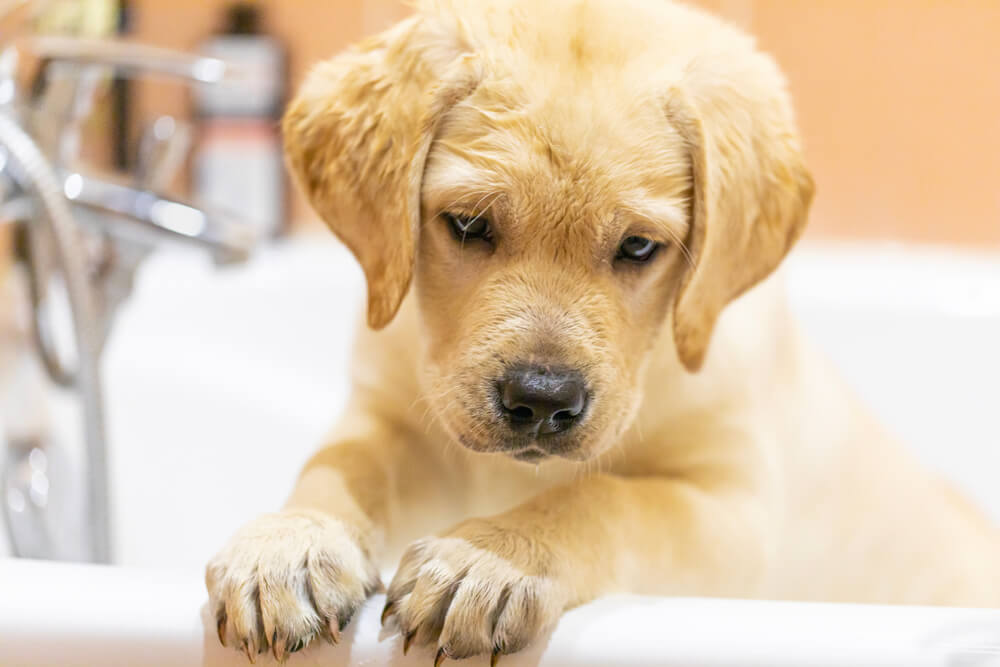
Step-By-Step Guide Bathing A Puppy
It’s the nature of puppies to get dirty and need a puppy bath so make plans now to learn how to bathe a puppy.
While some breeds need more bathing than others, excessive baths can strip natural oils from the coat and dry the skin.
Unless they get quite grubby, have a close encounter with a skunk, or are dog show prospects that need frequent grooming, most puppies shouldn’t need a bath more than one to four times a year.
Puppies shouldn’t be bathed until they are at least four weeks old six or eight weeks is better.
The little guys have trouble regulating their body temperature at that age and can become chilled.
Puppies who get sick with diarrhea may need dunking, but the stress of a bath can make the illness worse.
They could even end up with pneumonia.
Step 1: Determine Your Puppy’s Coat Type
Before you even get your dog wet, figure out what type of shampoo and conditioner to use.
This depends upon what type of fur your puppy has.
Talk to your vet first to find out what products suit your puppy best.
Step 2: Provide Treats and Cuddles
Start bathing their puppies as young as eight weeks old, as it establishes a life-long routine but take it one step at a time.
A puppy’s first visit to the groomer often doesn’t even consist of bathing.
It simply serves to teach them that grooming isn’t scary.
Step 3: Start With Lukewarm Water and a Rag.
There is no need to use cleansing products when the dog is very young.
Be sure the water is lukewarm so that the ritual is pleasant for your puppy.
No one wants a boiling hot bath and dogs are sensitive to heat.
Step 4: Graduate to Using Shampoo
Once your puppy is at least three months old, it’s time to start using shampoo and conditioner.
Step 5: Be Gentle
Don’t scrub.
Rather, use a very soft stream of water and gentle hand motions that move in the same direction that your puppy’s hair grows.
Use this same direction when brushing and blow-drying.
Step 6: Avoid Openings Around the Face
No one wants soap in their eyes, including your puppy.
Even tearless shampoos can irritate your dog’s eyes and you’ll also need to be careful around the ears, nose, and mouth.
She advises using minimal products around the face.
Also, pinching the base of the ear shut using your thumb and forefinger when cleaning the face.
Step 7: Rinse Thoroughly
Your dog isn’t clean until the soap is actually rinsed away, Bishop-Jenkins points out.
So give your dog a good rinse.
Step 8: Don’t Forget the Conditioner
Conditioner is just as important as shampoo.
As you did with the shampoo, give your dog a full rinse to be sure all the conditioner is gone.
Step 9: Blow Dry Time
Once your puppy is clean and conditioned, give them a gentle blow dry, but don’t use any blow-dry cream or other styling aid.
Once again, gentleness is key.
Use a small handheld blow dryer on a low setting and brush your dog’s hair in the direction it grows.
Step 10: Maintain a Bathing Routine
Bathing should happen monthly, as your dog’s skin and fur get clogged up with oil and dirt over time.
Puppies are in training for a lifetime, the importance of getting your dog accustomed to bath-time.
You don’t train a puppy one time.
You have to do it repeatedly, gently, minimally, and gradually, knowing you’re teaching them about an experience that they will have for the rest of their lives.
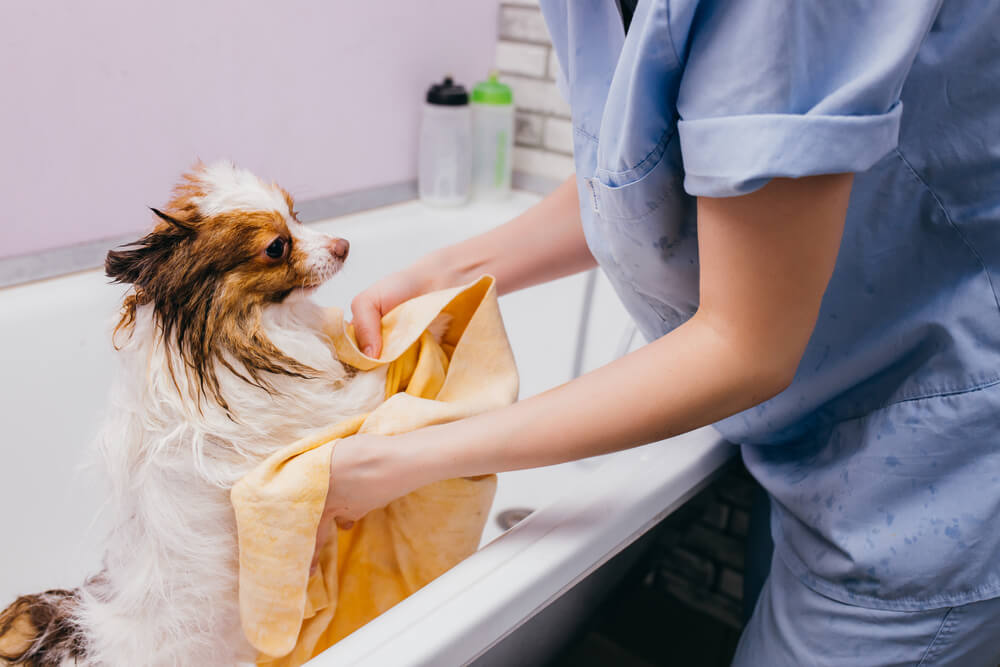
When Should I Go With The Pros?
If the idea of wrestling your dog into a bathtub and expecting them to quietly tolerate being lathered and rinsed makes you laugh hysterically, then do what many opt for: take your dog to someone who makes bathing dogs their business.
Groomers will not only bathe your dog, but they’ll clip their nails, express anal sacs upon request, trim near the eyes, and dry them off.
Most are priced reasonably.
Professional dog groomers are a must for certain breeds, such as Poodles, York, Maltese, Springers, and others with hair that grows long.
Unlike fur, hair doesn’t shed as much, and it will keep growing until it gets cut just like yours.
Even if your dog has fur instead of hair, groomers are helpful if your dog deeply hates baths.
They’ve got lots of tried-and-true techniques for making even the most bath-averse canine behave.

